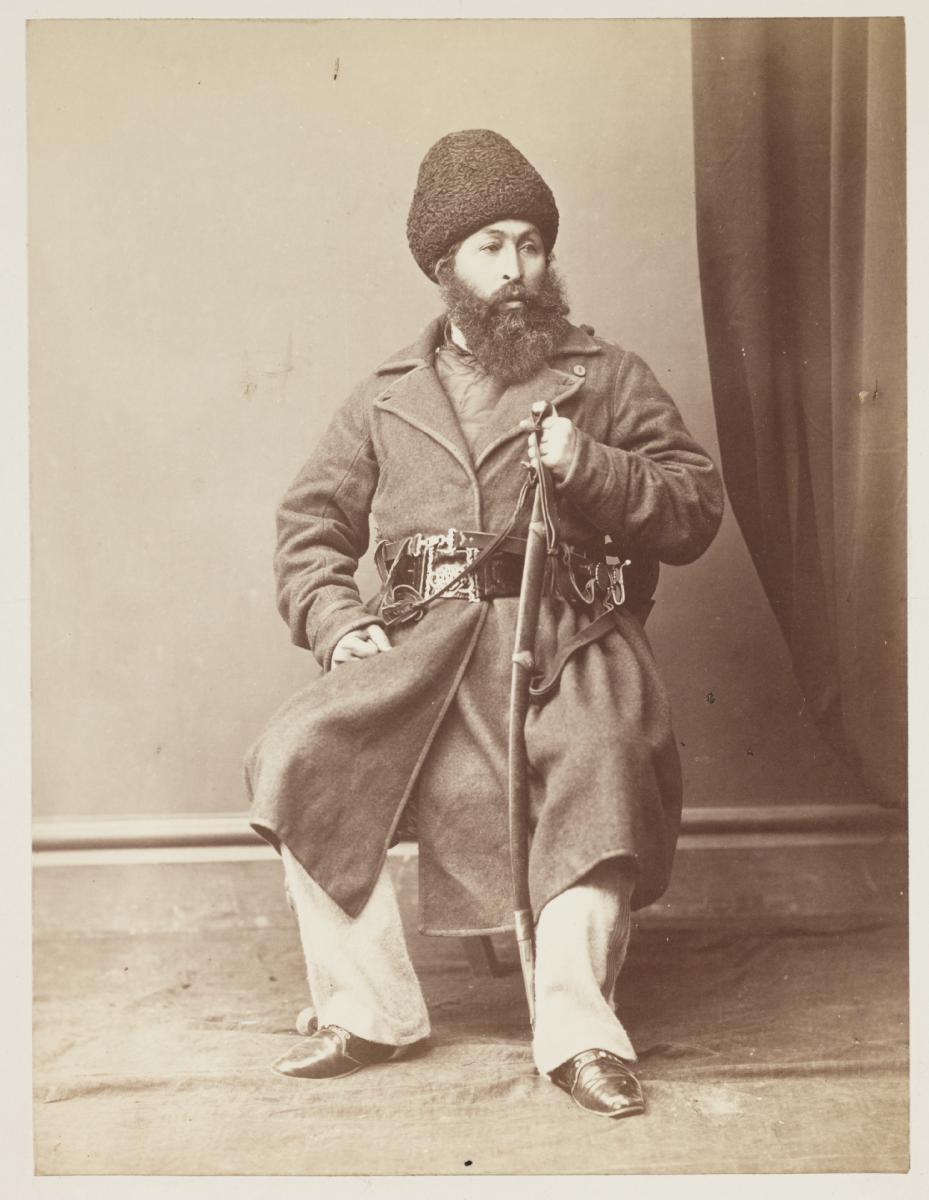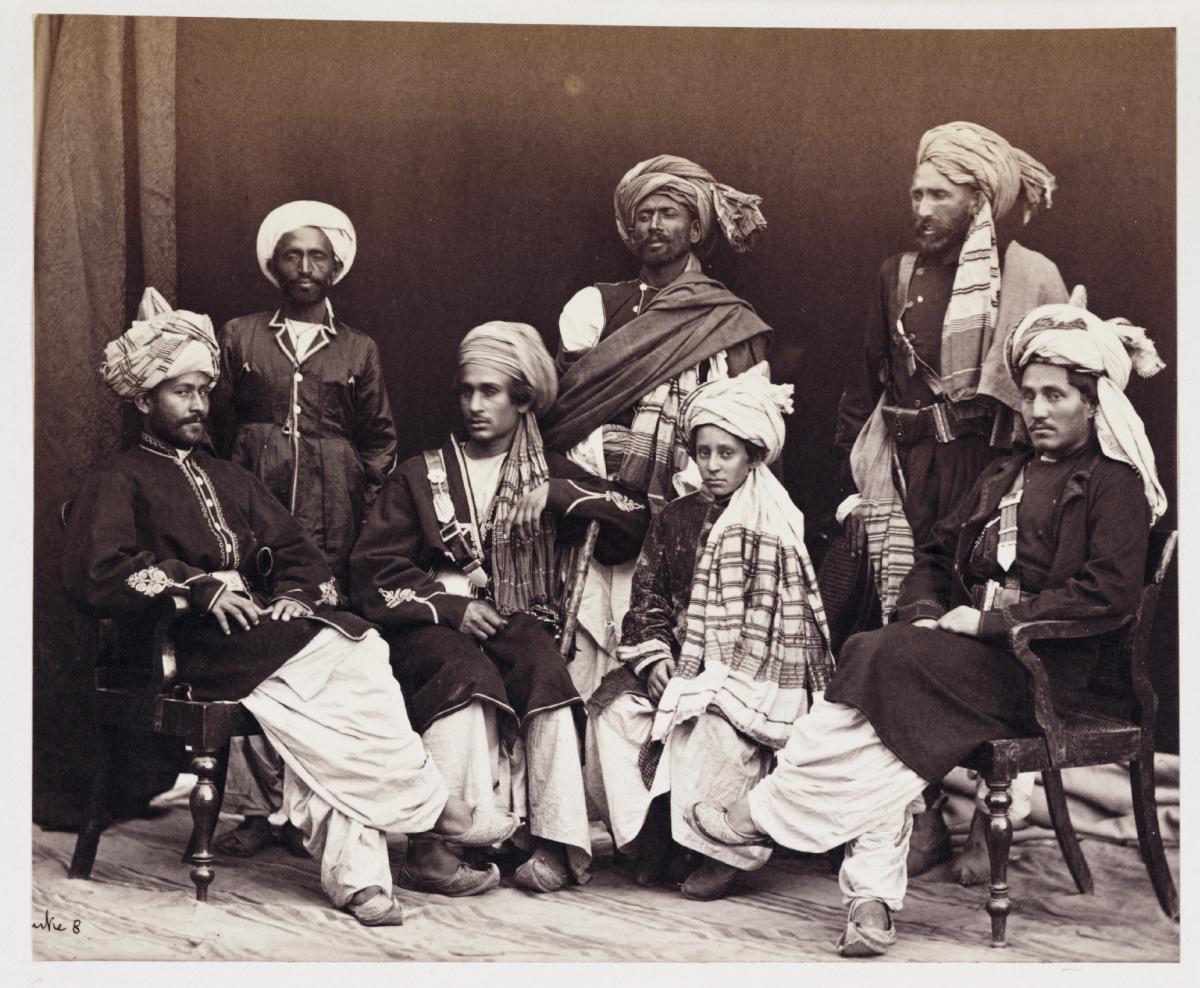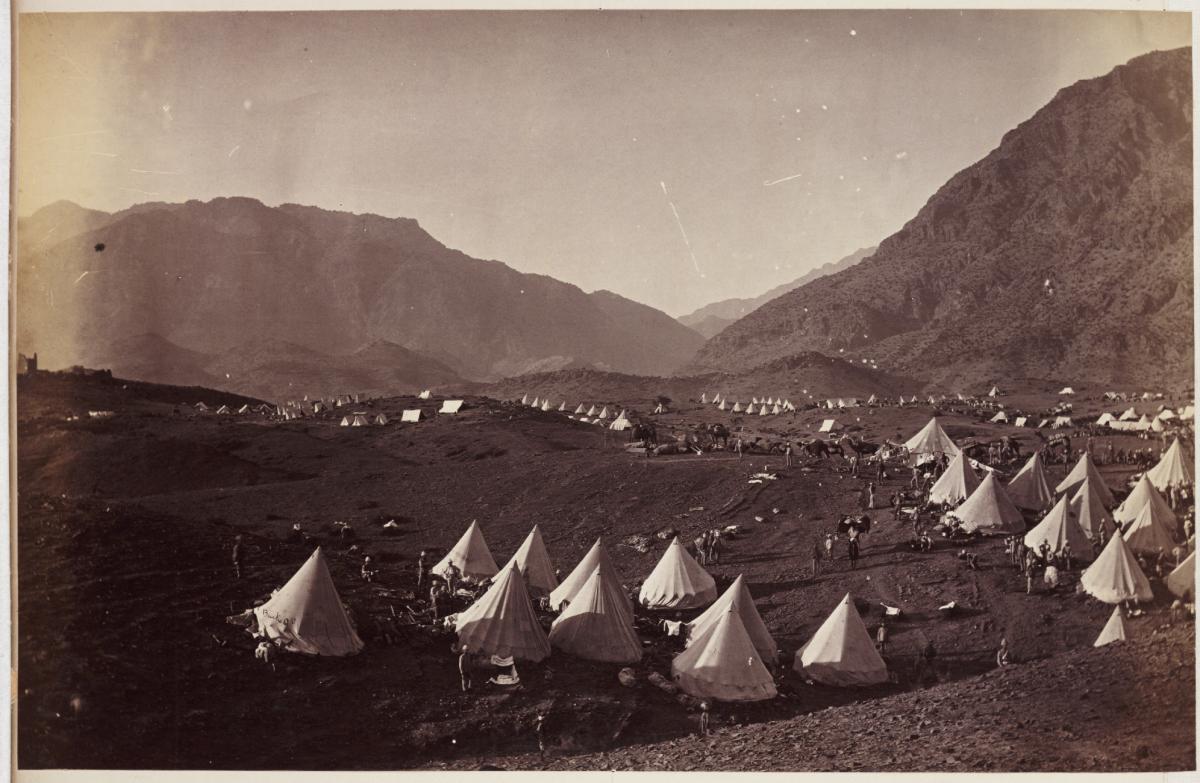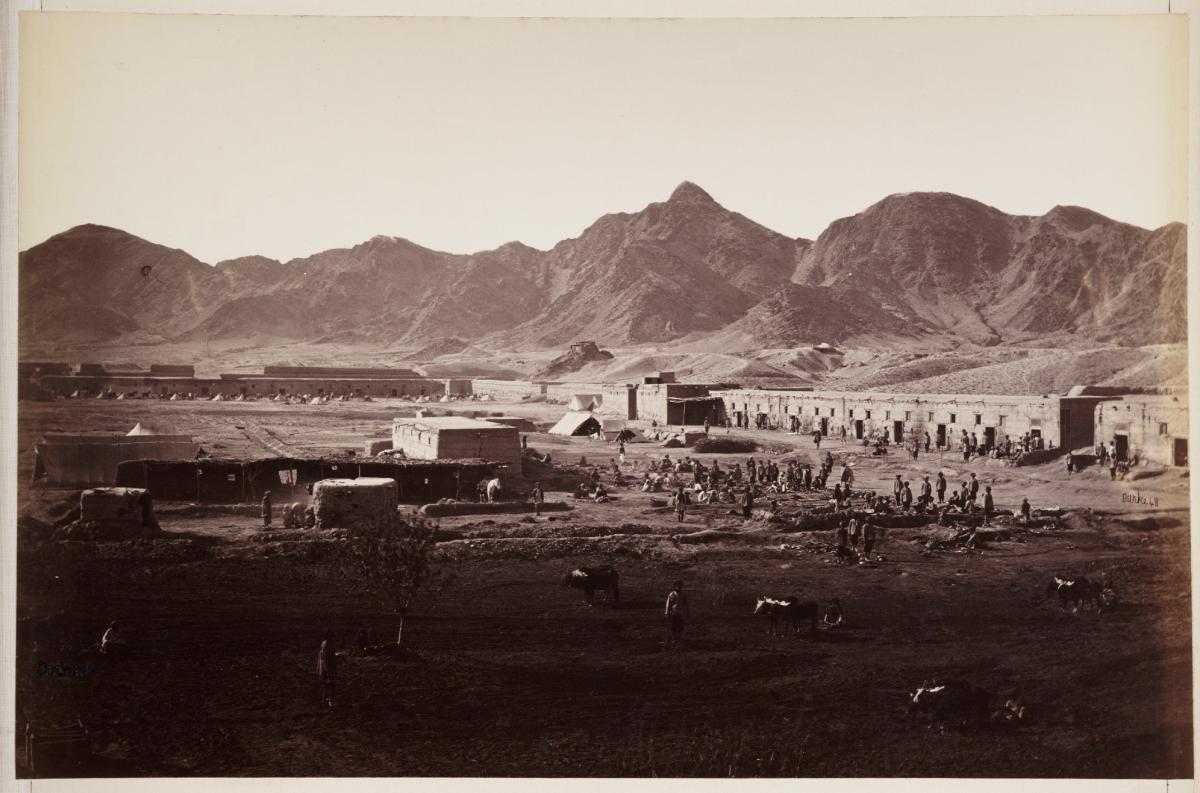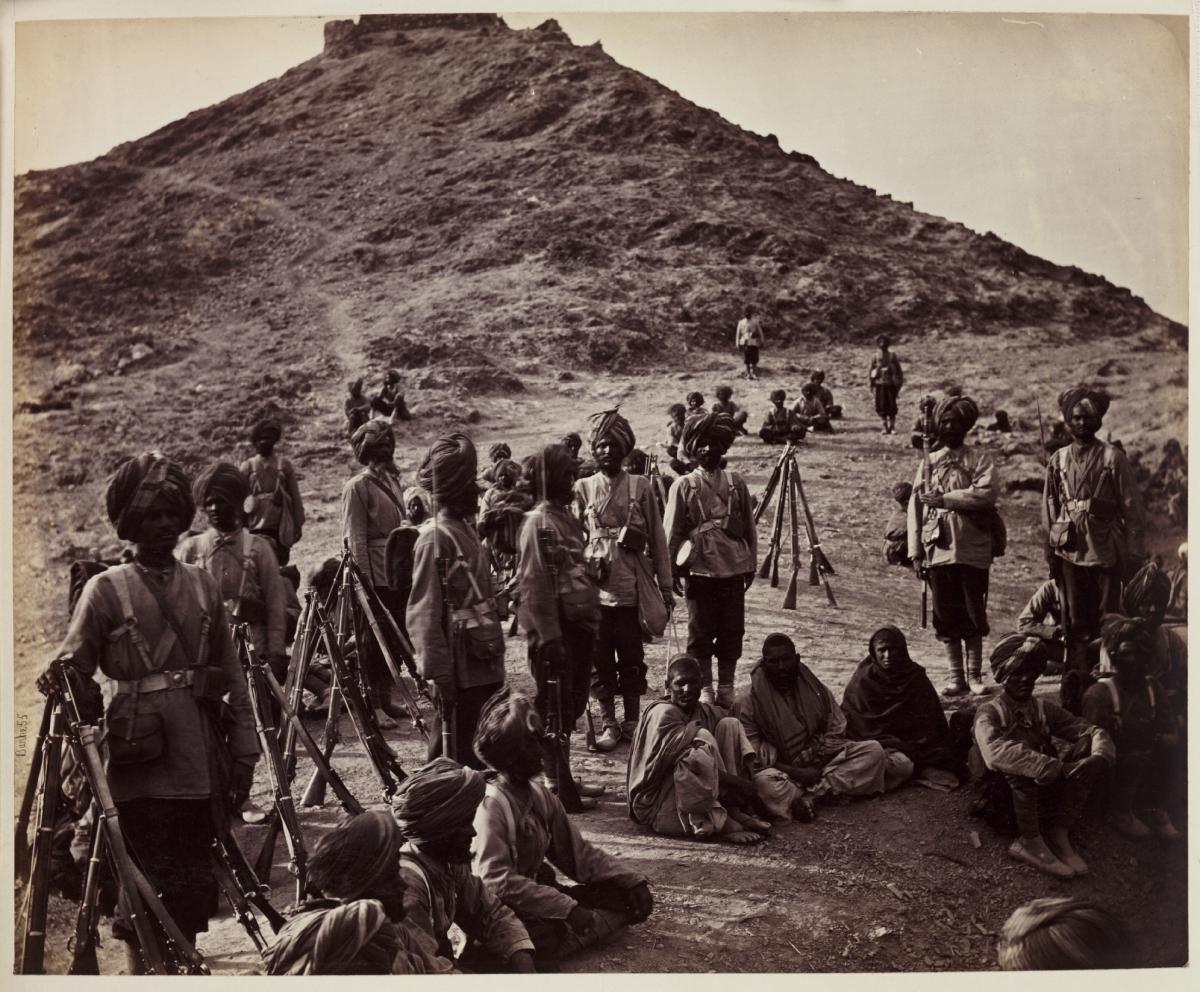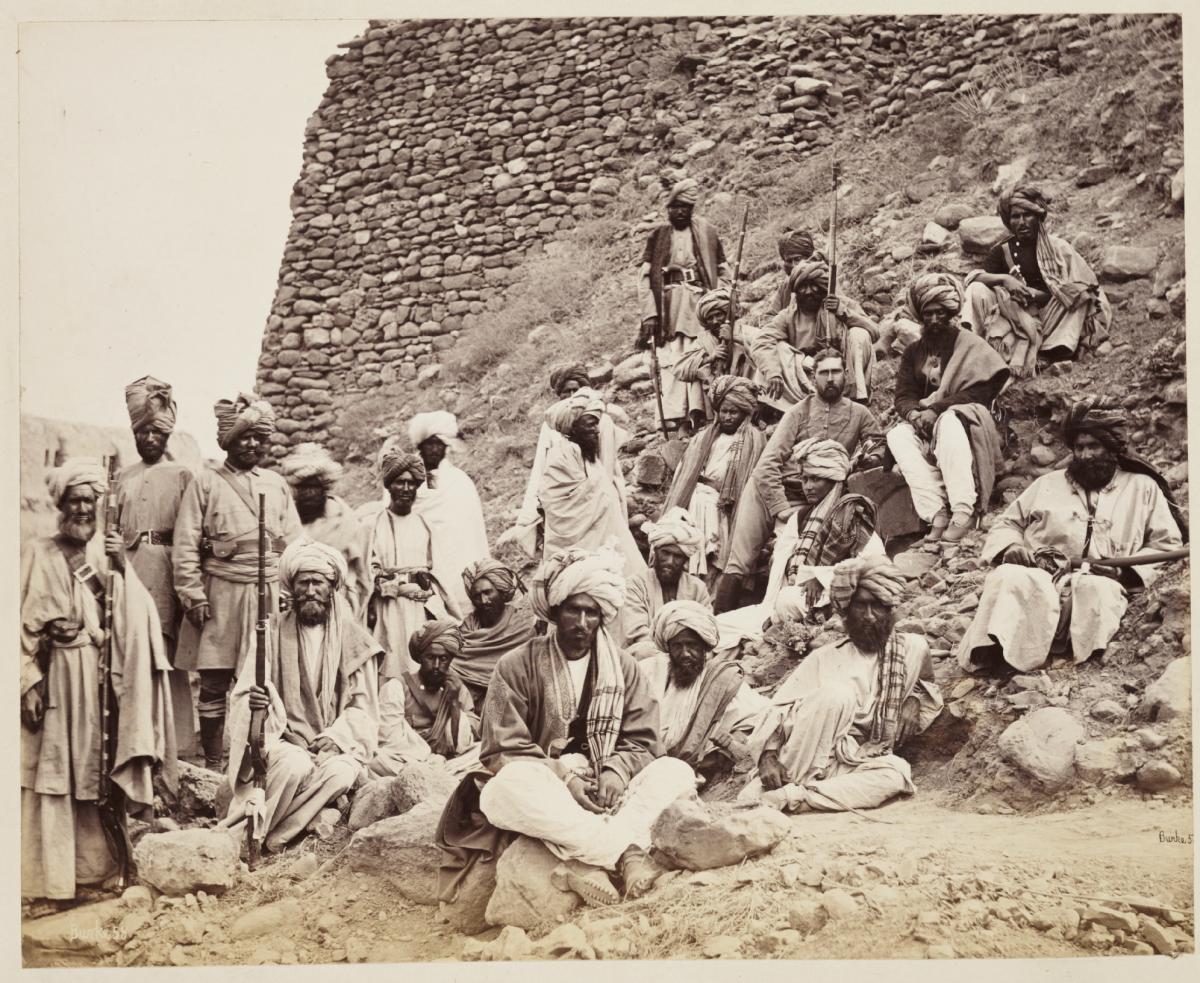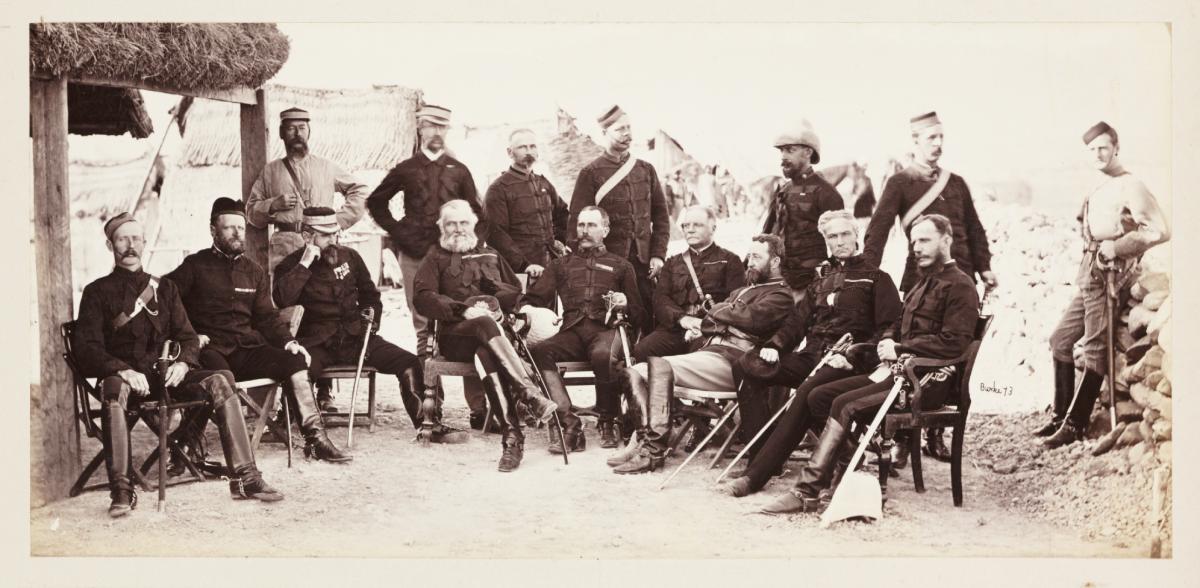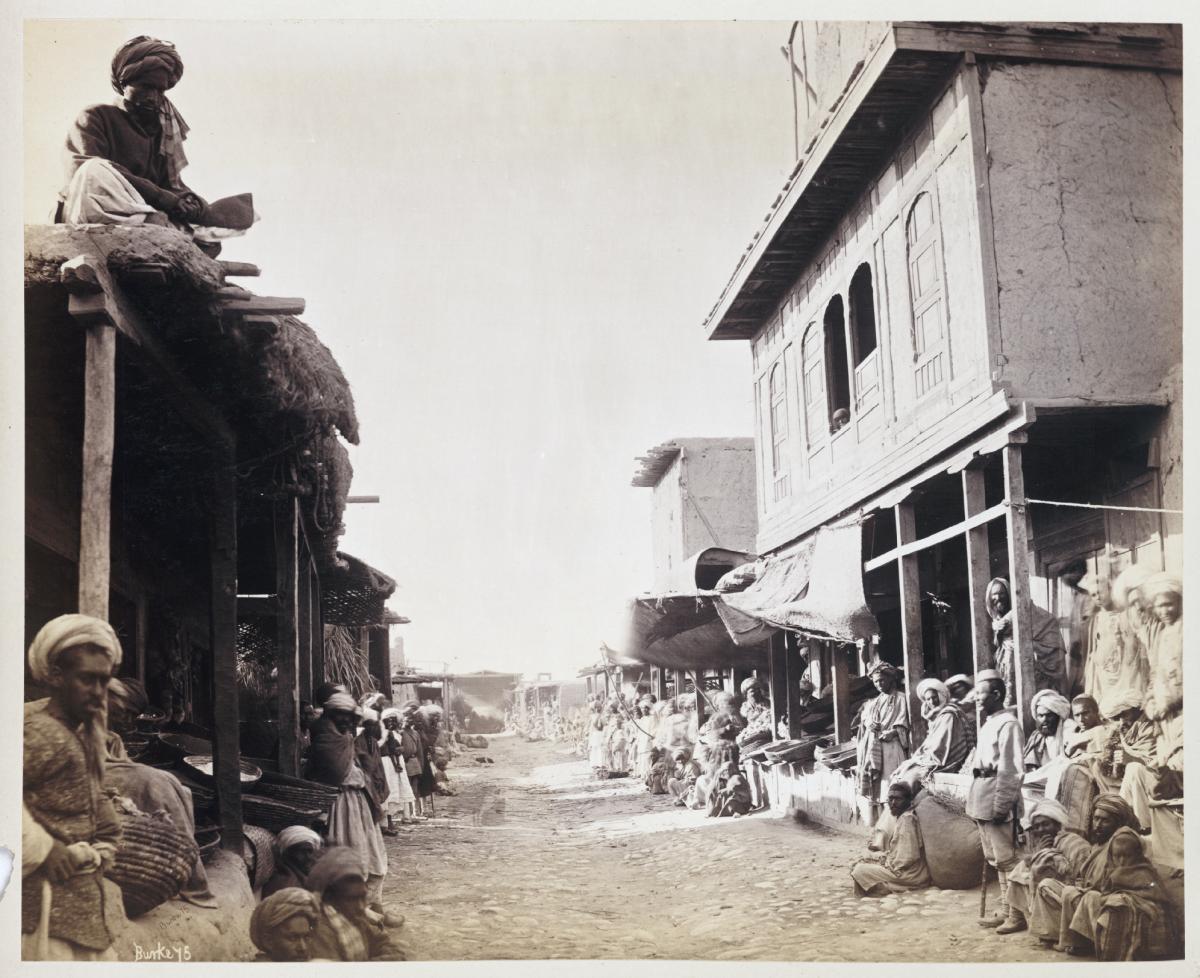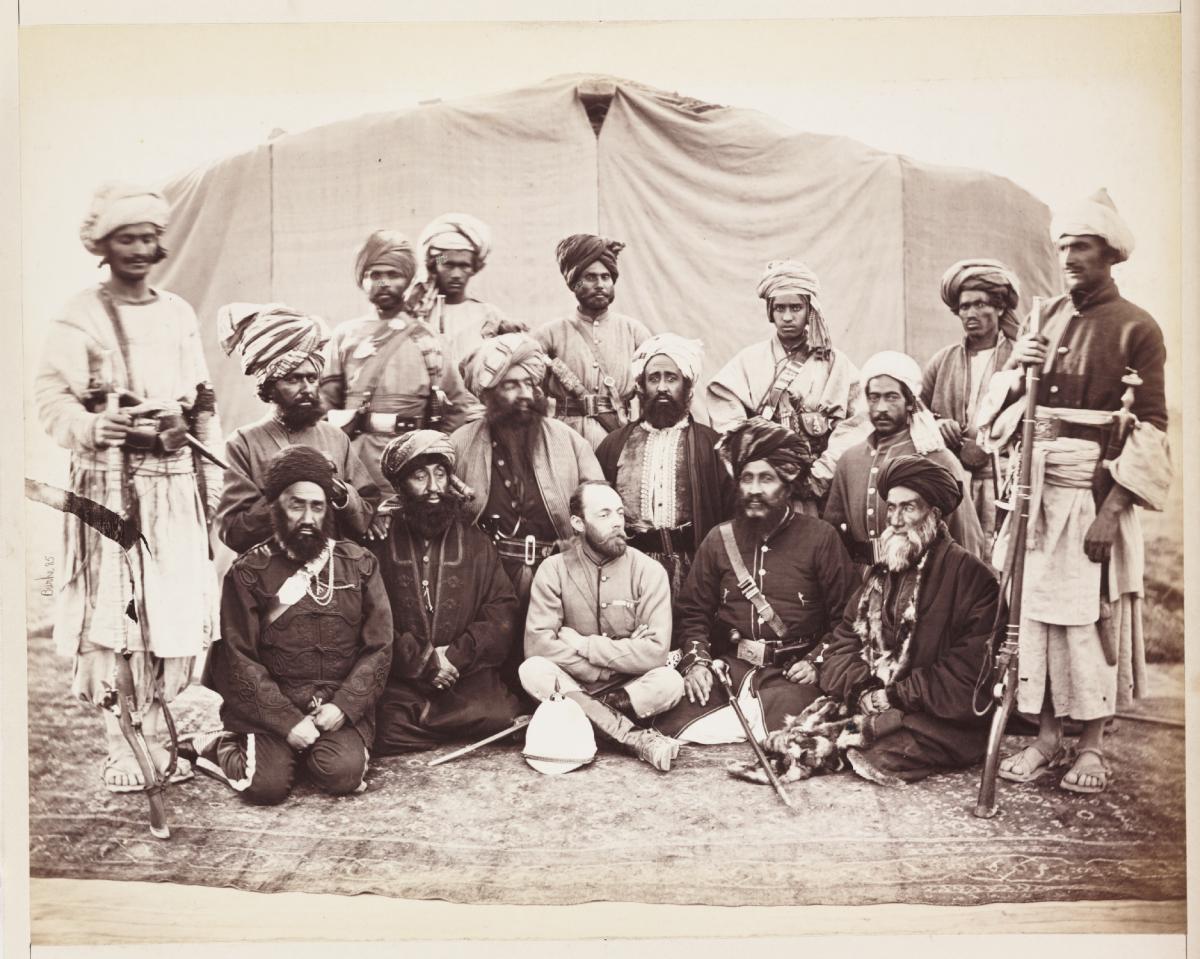Mr Burke Posing the Ameer
An engraving entitled 'Mr Burke Posing the Ameer', from the drawing by Frederic Villiers, published in 'The Graphic' in July 1879. The sketch shows John Burke taking a photograph of the Afghan Amir Yaqub Khan (d. 1914) at the signing of the treaty of Gandamak. The Amir poses in front of a large camera, wearing a white, European-style military uniform. The original text in 'The Graphic' reads: 'Mr. J. Burke the photographic artist attached to our Indian Army to illustrate the advance of the troops and the grand scenery of Afghanistan, was permitted by the Ameer of Cabul to take a series of pictures of himself and his suite at the camp at Gandamak.'
An engraving entitled 'Mr Burke Posing the Ameer', from the drawing by Frederic Villiers, published in 'The Graphic' in July 1879.
The sketch shows John Burke taking a photograph of the Afghan Amir Yaqub Khan (d. 1914) at the signing of the treaty of Gandamak.
The Amir poses in front of a large camera, wearing a white, European-style military uniform.
The original text in 'The Graphic' reads: 'Mr. J. Burke the photographic artist attached to our Indian Army to illustrate the advance of the troops and the grand scenery of Afghanistan, was permitted by the Ameer of Cabul to take a series of pictures of himself and his suite at the camp at Gandamak.'

